SAP ERP vs SuccessFactors
May 28, 2023 | Author: Adam Levine
24
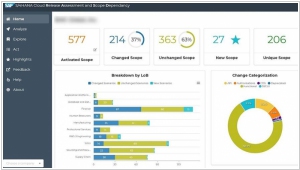
SAP’s intelligent ERP solutions are the Digital Core that enable businesses to integrate end-to-end cross functional next generation business processes so that companies can become intelligent. SAP's cloud ERP solutions use intelligent technologies to help you grow, innovate, and optimize time and resources – no matter the size of your business.
13
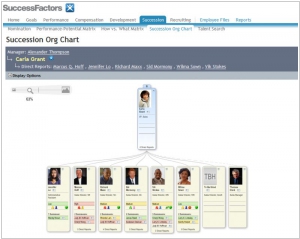
SAP SuccessFactors’ time-tested, analyst-recommended solutions drive goal execution across your business from top-to-bottom like no other alternative. By focusing on the three pillars of Business Execution excellence—Business Alignment, Team Execution and People Performance—SuccessFactors Business Execution Software delivers real business impact. It provides the foundation for organizational success by giving you the tools to put the right people in the right place to work on the right things.
SAP ERP and SuccessFactors are both enterprise software solutions offered by SAP, but they serve different purposes within the realm of business management. SAP ERP is a comprehensive enterprise resource planning system that integrates various business functions such as finance, supply chain management, human resources, sales, and manufacturing. It provides a centralized platform for managing core business processes, streamlining operations, and gaining insights into business performance. On the other hand, SuccessFactors is a cloud-based human capital management (HCM) solution focused specifically on managing HR processes, talent management, and employee engagement. It offers features for recruitment, performance management, learning and development, compensation, and workforce analytics.
See also: Top 10 Talent Management Systems
See also: Top 10 Talent Management Systems
SAP ERP vs SuccessFactors in our news:
2021. SAP is buying Berlin business process automation startup Signavio
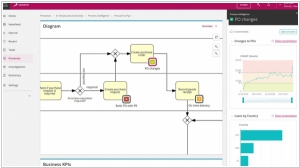
SAP has recently completed its acquisition of Signavio, a business process automation startup, for approximately $1.2 billion. This move reflects SAP's recognition of the value in adopting a more modern and cloud-native approach to address the challenges of enterprise business process automation. The ability to automate business processes through the cloud has gained significant importance, especially during the pandemic when remote work has become prevalent. By incorporating Signavio's cloud-native tool into its portfolio, SAP aims to enhance its capabilities in automating and optimizing business processes. SAP also views Signavio as a valuable addition to its business process intelligence unit, filling a crucial gap in its offerings.
2012. SAP became NetSuite's customer. Business ByDesign will be closed
Most of all NetSuite loves trolling its rival - SAP. From time to time they organize anti-SAP conferences, marketing campaign a la Business ByNetsuite and produce videos like that one above. And they haven't missed the opportunity to joke on SAP at this time. At the opening of the conference SuiteWorld, Zach Nelson (CEO of NetSuite) took the stage and announced that in the past year the company has achieved their biggest ever win: ERP-giant SAP has become NetSuite's customer. The audience was shocked, and then Zach explained. ***
2011. SAP acquires SaaS-champion SuccessFactors
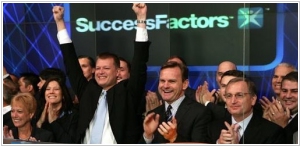
(SuccessFactors CEO Lars Dalgaard) ***
2011. Top 5 largest SaaS implementations. SuccessFactors vs WorkDay
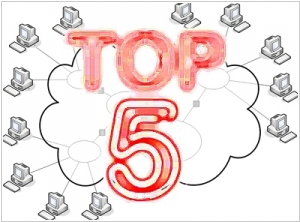
It wasn't so easy to create a list of the largest SaaS projects. Because though SaaS vendors would like to promote themselves, they often have no clearance from customer to go public on their deployments. Sometimes, when a dispute on the largest projects starts, they claim that they have a customer with XXX users, but don't tell what customer and provide no proof. Therefore, our rating is based on unverified information. However, it is interesting that neither Salesforce nor Google Apps are included in it. And four out of five deployments - are talent management (or human capital - HRM) systems: ***
2011. SAP embracing Amazon and Microsoft clouds

SAP is the most slow IT giant in terms of transition to the cloud technologies. Nevertheless, it's the world's largest software company and any of its steps to the Cloud serves as an indicator for all large corporations: "if even SAP released a SaaS-solution, then SaaS-solutions can indeed be trusted" or "if even SAP offers a version for Amazon Web Services, than this platform is really enterprise-ready". This week at the SAPPhire conference, the company reported on its cloud transition steps. First of all, the SaaS ERP-service SAP Business ByDesign is already used by 500 with a target of having 1000 signed up by the end of the year. Second, SAP has announced that it's "launching" the SaaS CRM-service SAP Sales OnDemand, which will be followed by a travel management cloud service and an on-demand suite for talent management. And third, SAP has started to adapt its existing systems for the Amazon and Microsoft cloud platforms. ***
2010. Who says Enterprise Software isn’t Cool? Watch what its users can do!
In addition to focusing on new business applications and modern trends in Enterprise software, we also pay attention to how vendors promote themselves and their products. This area is shifting towards the Enterprise 2.0 style, where traditional PowerPoint presentations and image-less PDF brochures are being replaced by captivating blockbusters and show-projects. Instead of mundane descriptions, we now encounter humorous sketches illustrating the consequences of running a business without the software. Such marketing strategies grab attention and, most importantly, foster a sense of affinity towards the software, even if the software itself is not particularly user-friendly, as is the case with SAP. SAP's latest show-project, Run Better, focuses on showcasing the remarkable achievements of its users rather than emphasizing the ERP system itself. Additionally, other examples of captivating marketing can be found from Box.net, Mainsoft, and NetSuite.
2010. SAP Business ByDesign goes live
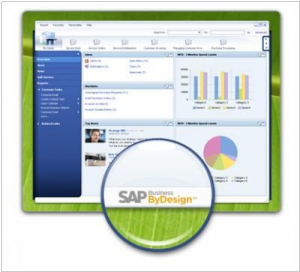
Finally, SAP has officially launched its SaaS ERP system, SAP Business ByDesign, which will compete with NetSuite, Workday and other cloud ERP solutions. As you know, it's not a fresh product. It was released 3 years ago, but due to the scalability problems, its sales were stopped, and still the system was used by fewer than 100 companies worldwide. SAP Business ByDesign is designed for SMB (50-500 employees) and primarily for manufacturing and professional services industries. It's a single multitenant service to automate all business areas, including manufacturing, financials and sales. The updated version SAP Business ByDesign 2.5 provides support for mobile devices, integration with MS Excel, custom forms and user interface based on Silverlight. But its pricing will hardly cause a revolution in SaaS sphere. ***
2010. SAP acquired Sybase to get the cloud database and mobile apps

The world's largest enterprise software vendor, SAP has become even more large. For $5.8 billion SAP has acquired Sybase, the company primarily known as one of the leading database and enterprise mobile applications vendor. Until now, SAP didn't have its own database and provided customers a freedom of choice in this matter. At the same time SAP was reselling about a billion dollars worth of Oracle databases - a bad idea considering SAP and Oracle are in direct competition. However, it is unlikely that Sybase database will replace all other database middleware in the traditional SAP ERP deployments. On the other hand, it can be very useful for cloud deployments and creation of the own SaaS platform for SAP Business ByDesign. Because Sybase has recently released the cloud version of its database, which is primarily designed for Amazon EC2. ***
2010. Talent Management 2.0: SuccessFactors vs Taleo

Everyone knows that "talent is everything". Everyone knows that 80% of his time boss should devote to employees and their motivation. But in practice, boss remember about an employee only when he did something wrong and proved once again that his salary is too high. However, as competition in all areas is growing and business becomes more and more dependent of its talents, this outdated practice will only lead to deadpool. That's why talent management software and services are now experiencing a rapid growth. In the recent SaaS tool ratings talent management (and related technologies - HRM and e-Recruting) - are among most demanded. In this talent management market two gorillas have emerged: Taleo and SuccessFactors. And both these companies provide SaaS solutions. ***
2008. SuccessFactors plugs Google Apps into HCM
SuccessFactors, a SaaS vendor, has partnered with Google to bring its cloud-based collaboration suite into the human capital management (HCM) space. SuccessFactors has launched five Google integrations that can be activated within its talent management software, including integrations with Google Docs, Google Calendar, Google Talk, Google Maps, and Google Book Search. While the integration is not as deep as in the case of Salesforce, it has the potential to reach a large user base as SuccessFactors boasts over 4 million users. This move positions SuccessFactors as the first HCM application to link with Google Apps, which already has over 500,000 organizations signed up. SuccessFactors sees this integration as a differentiation from competitors, highlighting its multitenancy and shared services architecture. The company plans to explore further integrations with other providers and sees vast opportunities in leveraging web services in the cloud. The Google integrations offer various benefits, such as in-app chat support, synchronized performance tasks with Google Calendar, embedding Google documents in profiles, accessing relevant books through Google Book Search, and visualizing team locations with Google Maps. However, the integration with Gmail was excluded due to privacy concerns, and the Google Talk integration only allows chat conversations to be copied and pasted within SuccessFactors. Customers can enable the integrations through configuration options provided by SuccessFactors and must separately subscribe to Google Apps, with the option to restrict users to their corporate Google Apps accounts.




